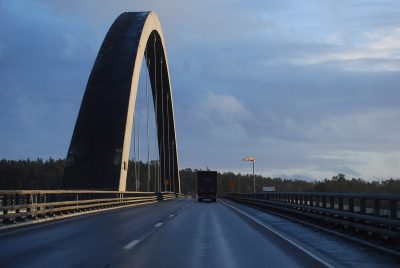Customs officers were prepared this past week for another seasonal burst of Norwegians driving over the border to shop in Sweden. Border trade is stronger than ever, but there are traps for unwary Norwegian shoppers.

A new survey compiled by the Norwegian business school NHH (Norges Handelshøyskole) in Bergen shows that fully 60 percent of all Norwegians have bought groceries in Sweden during the past year. That’s significant because figures show that even residents of counties located the farthest from the Swedish border, like Hordaland and Rogaland, have taken advantage of Sweden’s lower prices on many household items.
Residents of Norway’s most populous county bordering on Sweden, Østfold, predictably accounted for the most frequent shoppers in Sweden. NHH’s survey showed that 92 percent of Østfold residents reported having shopped in Sweden, compared to 79 percent of residents of Vestfold County and 76 percent of those living in Akershus, the country around Oslo.
Sugar tax sweetens Swedish sales
Meat, soft drinks, cheese, candy and alcoholic beverages top shopping lists, reports newspaper Nationen. An increase in Norway’s tax on sugar has boosted candy and soft drink prices considerably, sweetening sales for Swedish merchants.
At Easter, Sweden’s chain of state-controlled liquor stores System Bolaget also remain open on Holy Thursday, when Norway’s Vinmonopolet is closed. That boosts Easter traffic over the border as well, at a time when the Norwegian krone has strengthened against Sweden’s. That makes prices even lower.
Police in Sweden, meanwhile, reported Friday that they mostly avoided serious disruption and violence in the town of Strömstad on Thursday this year. It’s long been a magnet for Norwegian youth and troublemakers who drive south of the border to buy cheaper liquor and party in the streets. “Given all the drunks, it’s actually rather under control this year,” one police officer told state broadcaster NRK on Thursday.
Norway’s state statistics bureau SSB (Statistics Norway) reports that Norwegians spent nearly NOK 16 billion shopping in Sweden last year. That may rise this year, given what one Norwegian economist (Magne Gundersen at SpareBank1) called a “5-6 percent rebate” because of Norway’s stronger currency.
Customs officers standing by
Norwegian consumers still risk being stopped at the border by customs officers who routinely mount a so-called kontroll of goods flowing into Norway. It’s not allowed, for example, to bring potatoes into Norway, not because of protectionist-minded agriculture policy but out of fear that potatoes planted into Norwegian soil can spread disease. Nor can garden plants be imported without a letter amounting to a health certificate for them. There’s also a maximum quota of five plants per person for indoor use.
Limits on private import of alcoholic beverages have not been changed and allow a liter of liquor in addition to wine and beer. Shoppers are advised to check the actual alcohol content on any spirits they buy, however, since Norway bans anything higher than 60 percent. Some spirits sold in Sweden contain 72 percent alcohol, and they can be confiscated at the border.
Norwegians on a day trip to Sweden can legally bring in up to NOK 3,000 (USD 380) worth of goods per person. Two people can’t combine their quotas, however, to bring in a new TV priced at NOK 6,000, for example. That sort of purchase requires stopping at border control station, declaring the purchase and paying any customs duties owed.
newsinenglish.no/Nina Berglund

